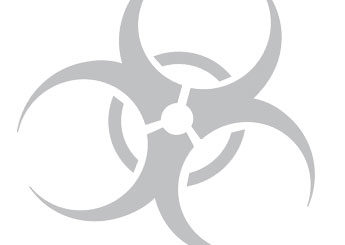CDC stops shipping biological materials; closes 2 labs after exposure incidents

At press time, the Centers for Disease Control and Prevention had stopped shipment of high-hazard biological materials – pending review from an advisory committee – after incidents of anthrax exposure and shipment of bird flu.
In a report released July 11, CDC reviewed a June incident in which live samples of anthrax were unintentionally sent to three CDC laboratories, potentially exposing as many as 84 workers.
The report concludes that the scientists failed to follow an approved plan that met all safety requirements. It also found a lack of standard operating procedures to document when biological agents are properly inactivated and a lack of adequate laboratory oversight of scientists.
None of the potentially exposed staff has become ill with anthrax, CDC said. The lab in which the anthrax samples originated has been closed since June 16.
The report stated that, beyond the anthrax incident, CDC is aware of four other incidents in the past decade involving dangerous pathogens – including botulism bacteria and bird flu – being sent to other labs.
In March, a strain of bird flu was shipped from an influenza laboratory to a U.S. Department of Agriculture laboratory. That CDC influenza laboratory is closed and will not reopen until adequate improvements are made, CDC said.
“I’m disappointed by what happened and, frankly, I’m angry about it,” CDC Director Tom Frieden said during a July 11 press conference. “The American people depend on us 24/7 to protect them.”
The report was issued three days after government officials discovered decades-old vials of smallpox in a storage room at the National Institutes of Health campus in Bethesda, MD. Frieden said two of the vials showed growth in tissue culture, indicating the samples are alive. After more testing, the samples were to be destroyed.
CDC has formed an external laboratory safety workgroup in response to the recent incidents.
Announced July 24, the group is tasked with providing advice and guidance to Frieden and new Director of Laboratory Safety Michael Bell. Other functions include identifying lab safety training and oversight needs, reviewing and providing input on corrective actions for CDC labs, and prioritizing implementation of additional safeguards across all CDC labs.
The 11-member group, composed of college professors and health leaders, will meet as frequently as needed, CDC stated in a press release.
In addition, the agency announced it had resumed transfer of inactivated materials out of its clinical tuberculosis lab while other high-containment laboratories remain closed.
In a separate report, the Government Accountability Office concludes that no federal entity is responsible for strategic planning and oversight of such laboratories.
Released July 16, the GAO report states that oversight of these laboratories is fragmented and self-policing.
The number of high-containment labs has increased since the 1990s. However, the expansion was based not on a governmentwide coordinated strategy, but on individual agencies’ missions and available congressionally approved funding, according to the report. No research agenda linked all these agencies, which would allow for a national needs assessment, strategic plan or coordinated oversight, the report states.
The CDC incident and the risks of biosecurity highlight the need for a national strategy to evaluate the requirements for high-containment labs, set and maintain national standards for construction and operation, and maintain a national strategy for lab oversight, according to the report.
GAO previously found a lack of national standards for designing, constructing, commissioning and operating high-containment labs.
Download the reports.
Post a comment to this article
Safety+Health welcomes comments that promote respectful dialogue. Please stay on topic. Comments that contain personal attacks, profanity or abusive language – or those aggressively promoting products or services – will be removed. We reserve the right to determine which comments violate our comment policy. (Anonymous comments are welcome; merely skip the “name” field in the comment box. An email address is required but will not be included with your comment.)

